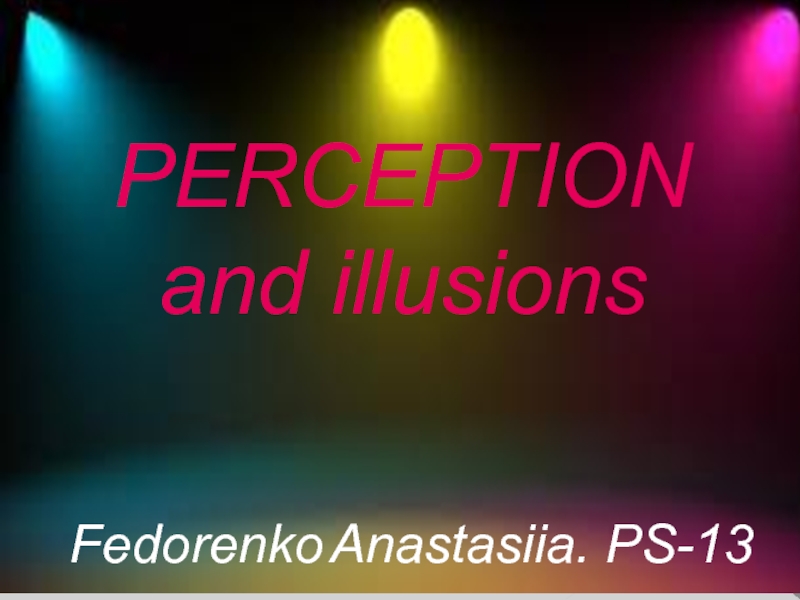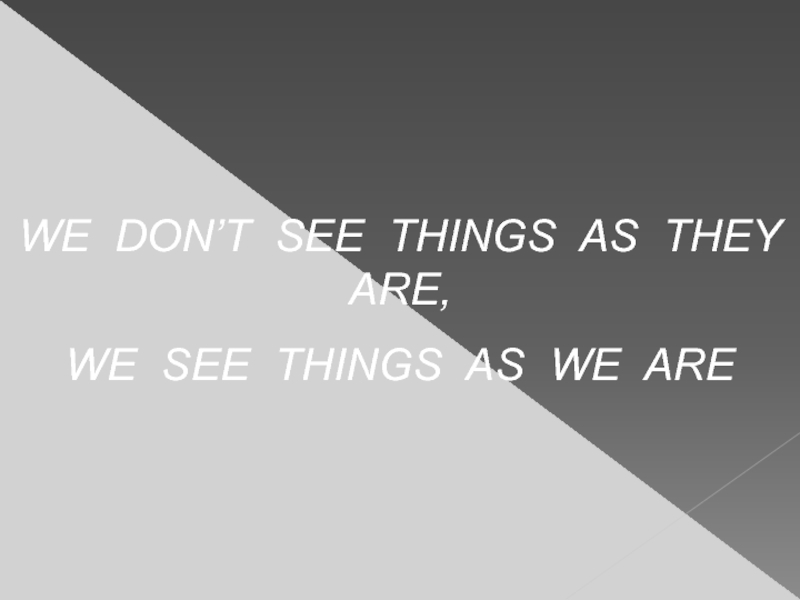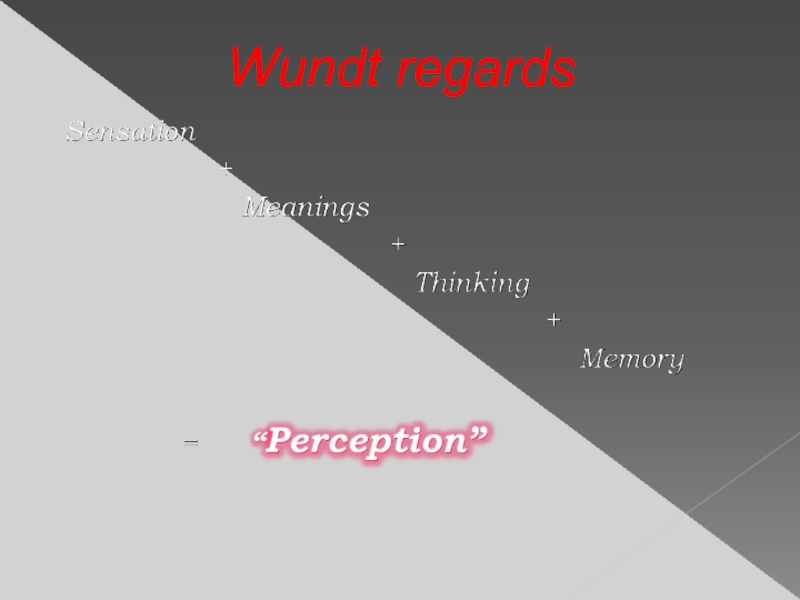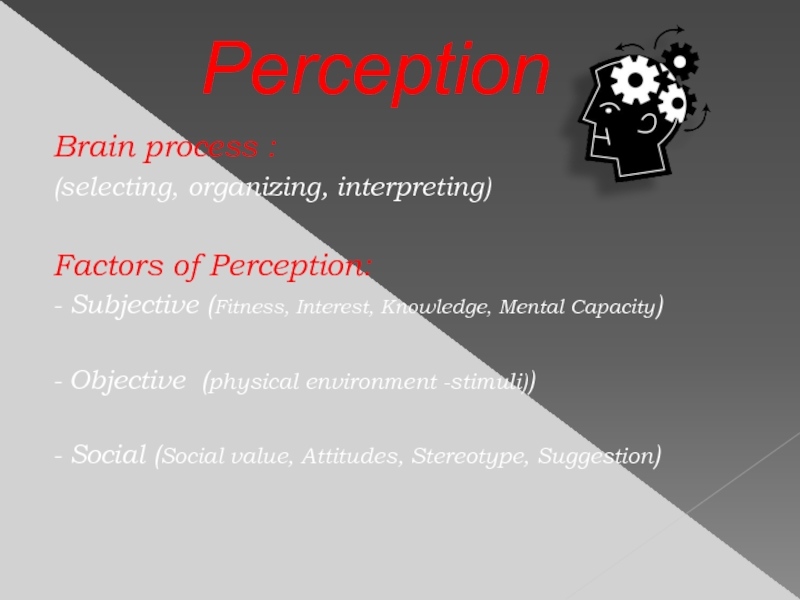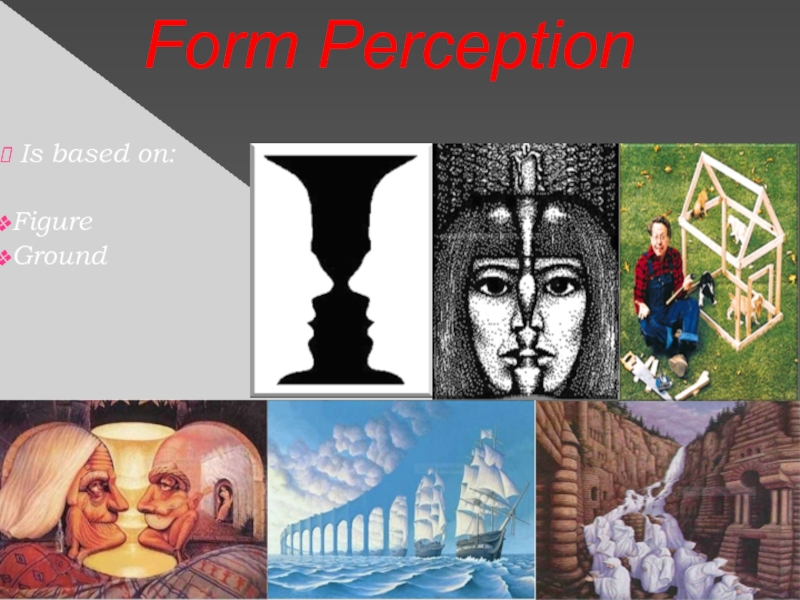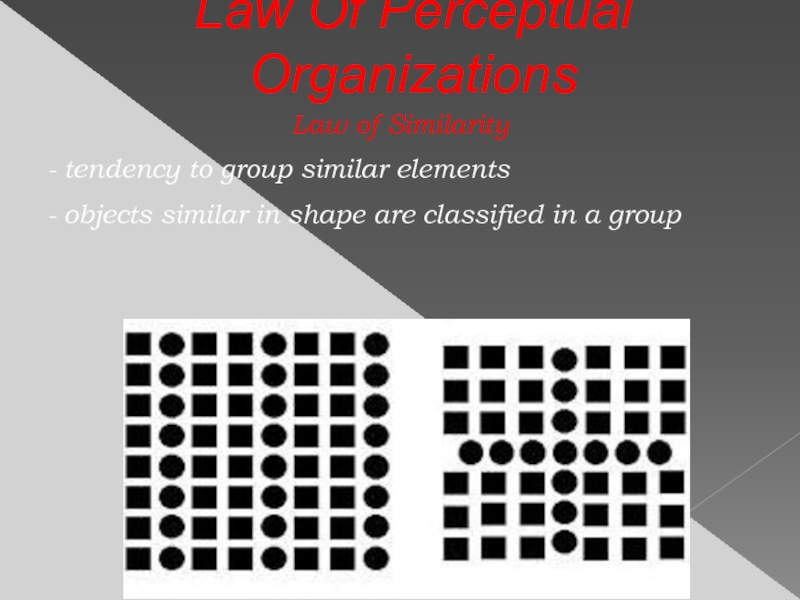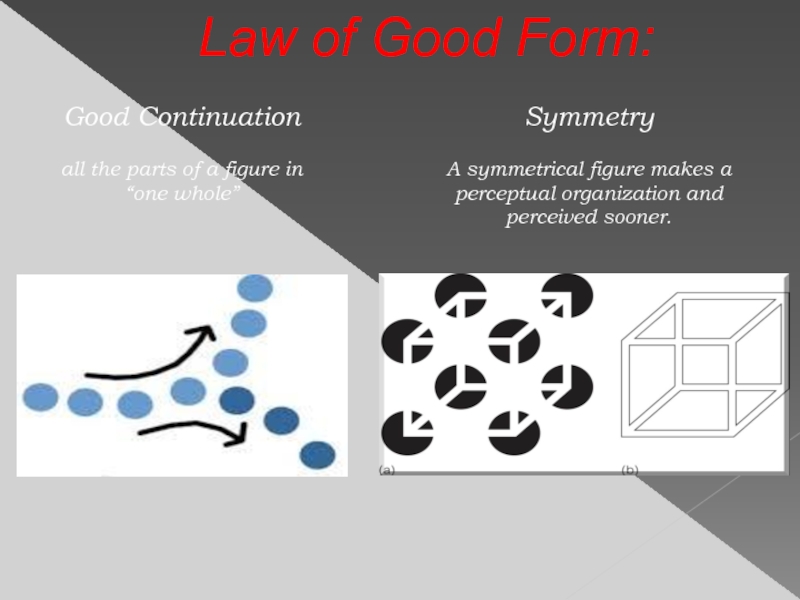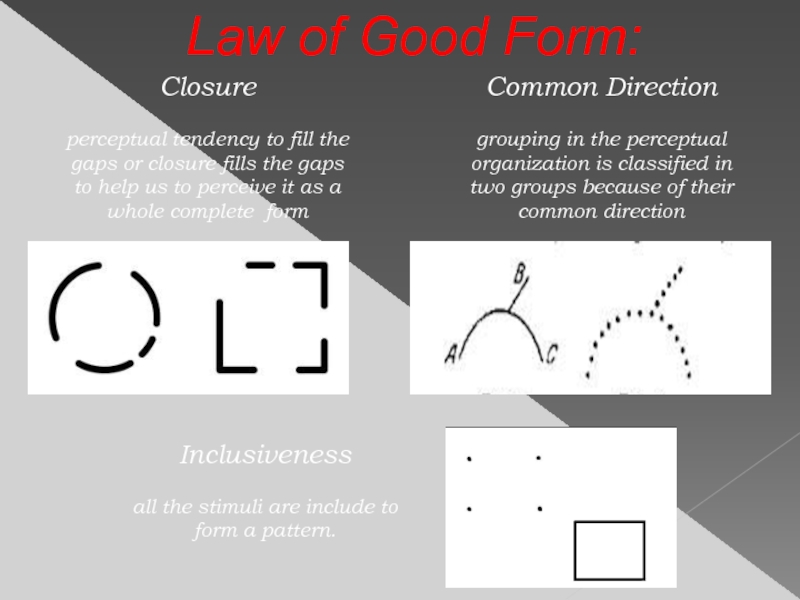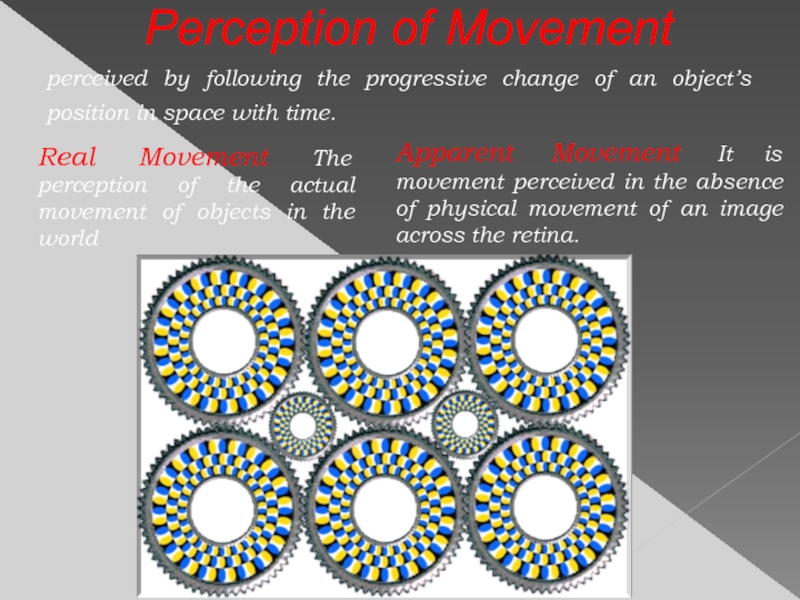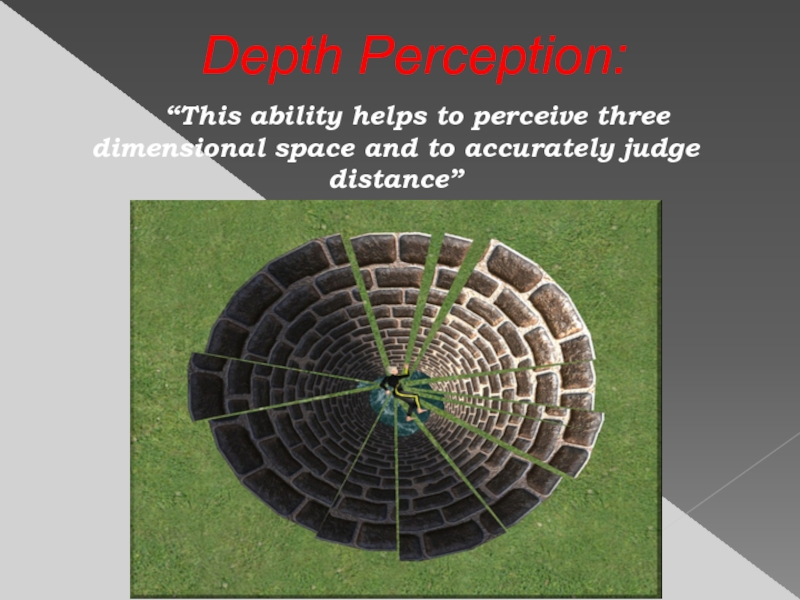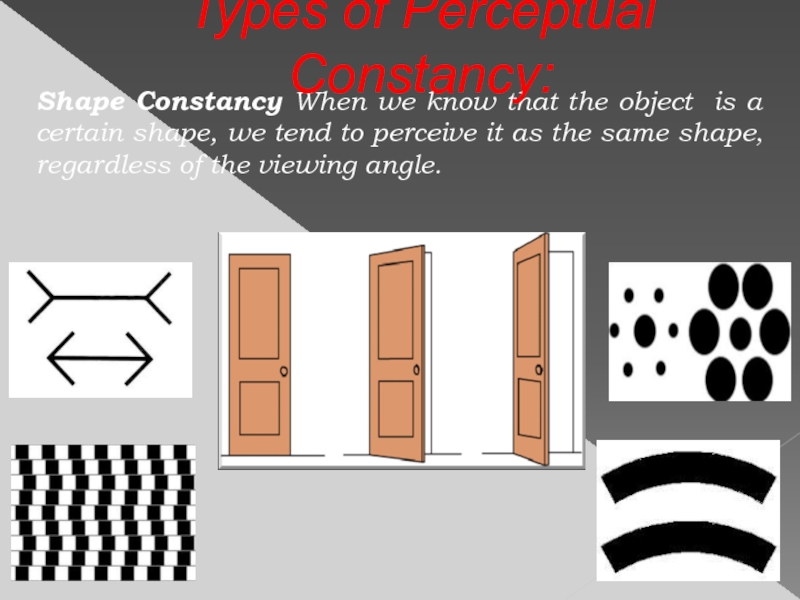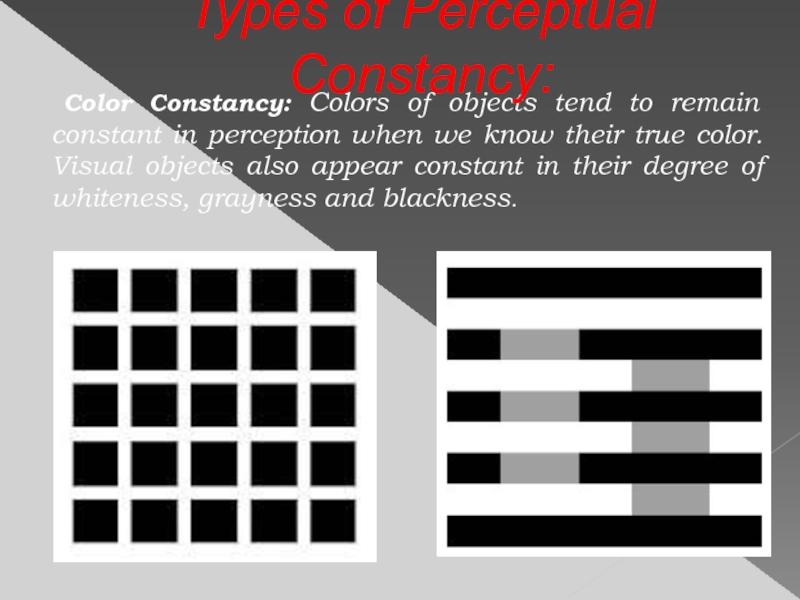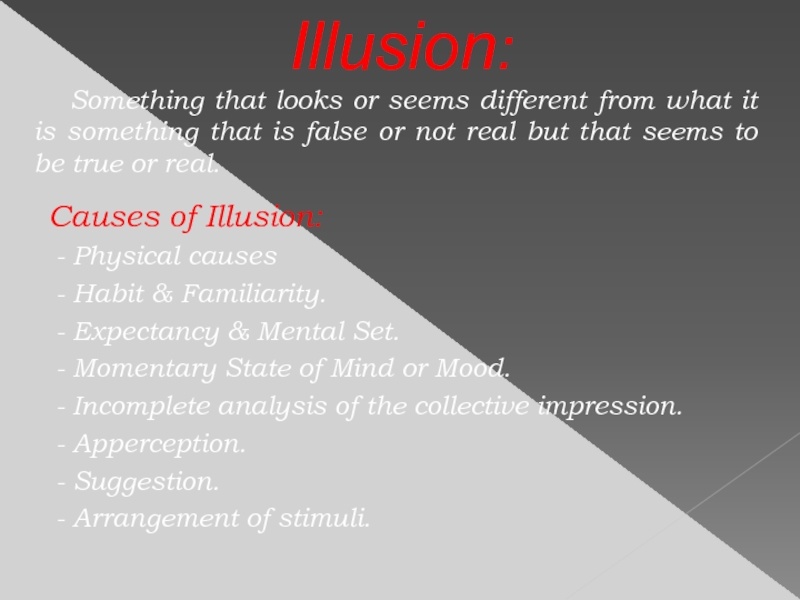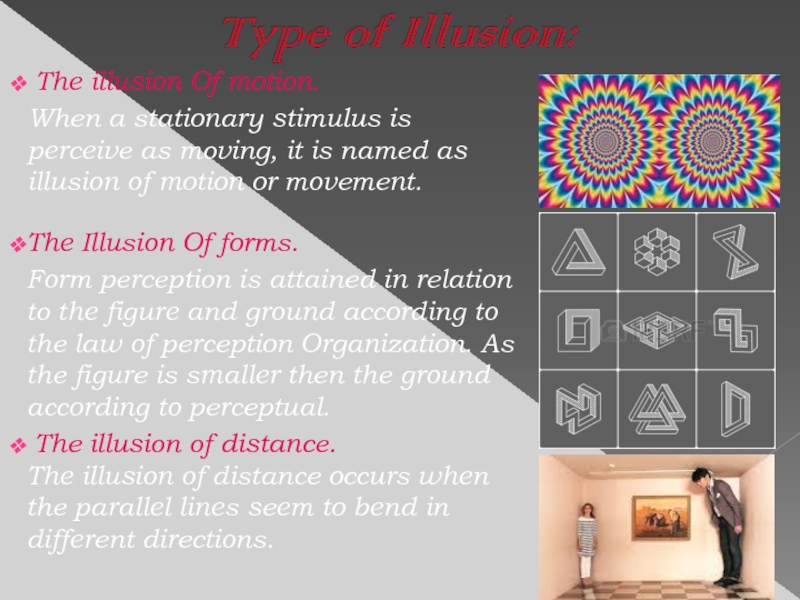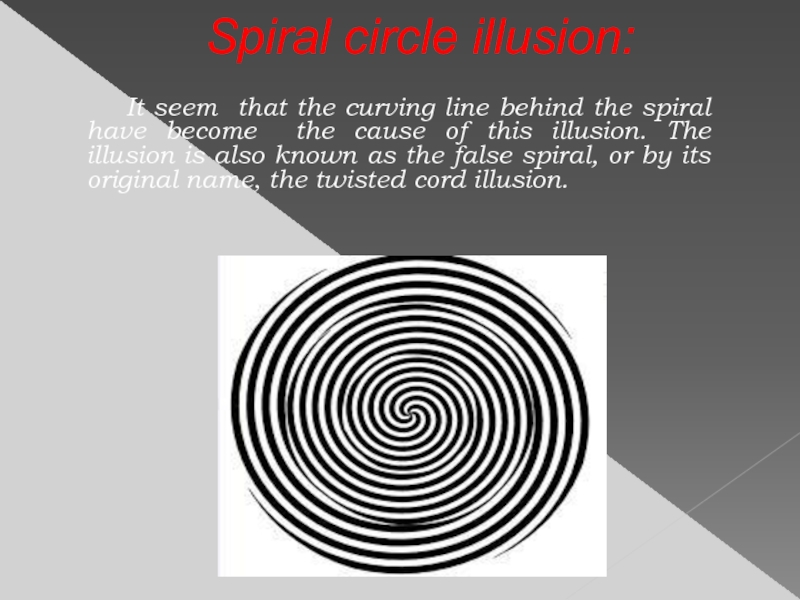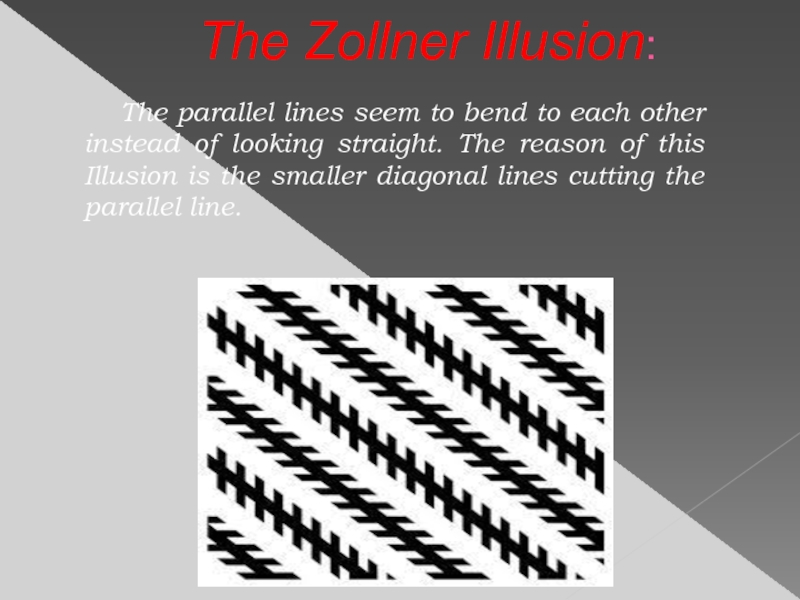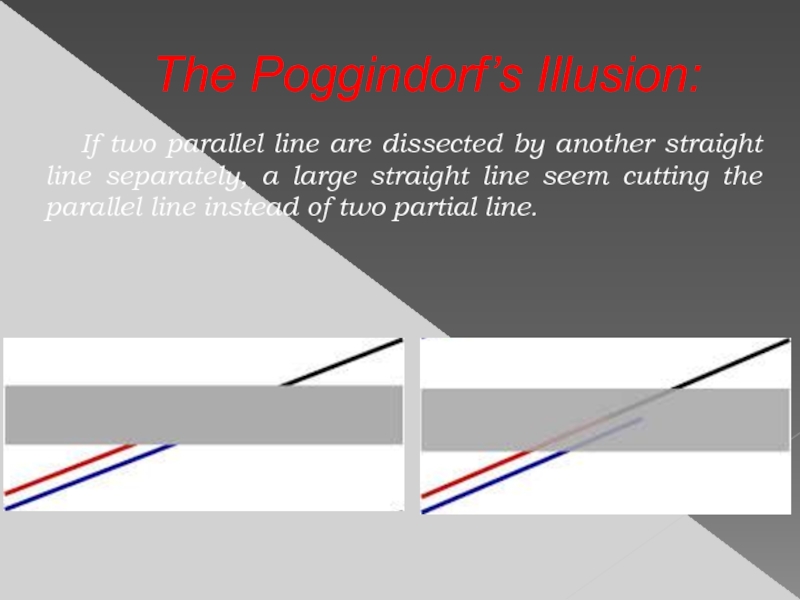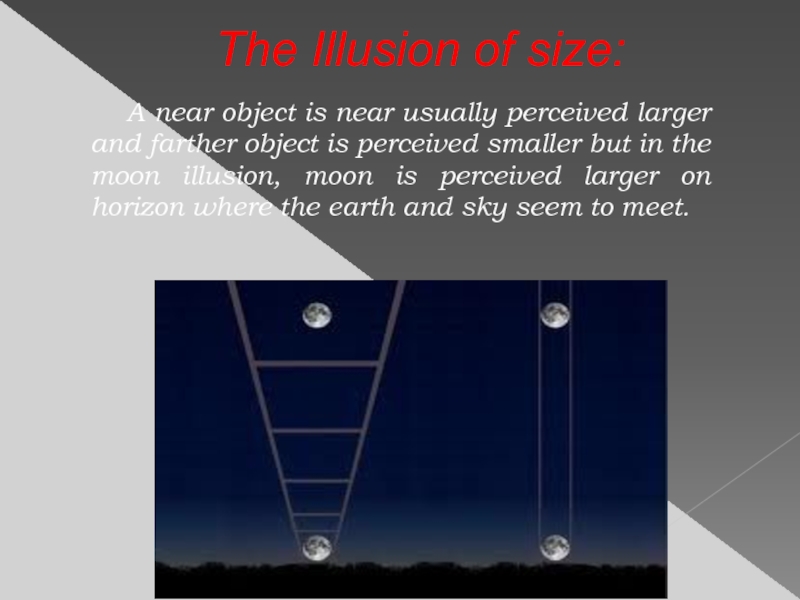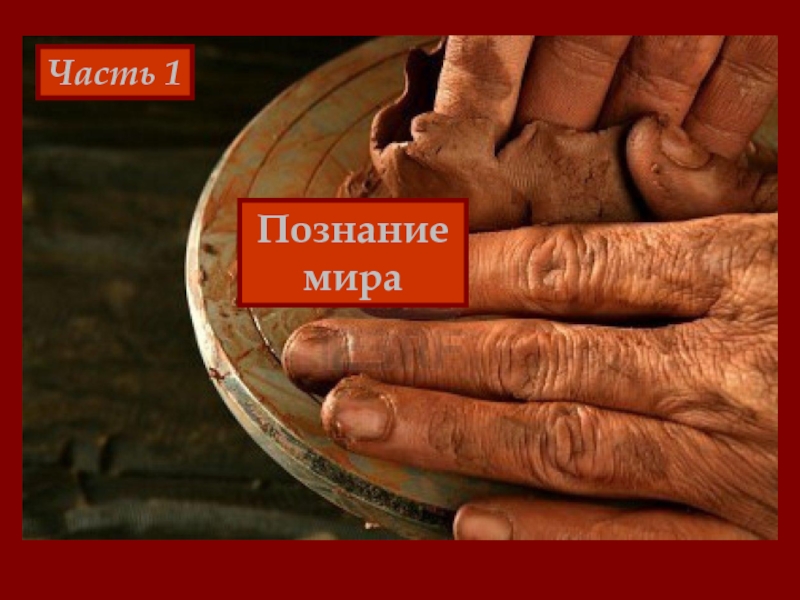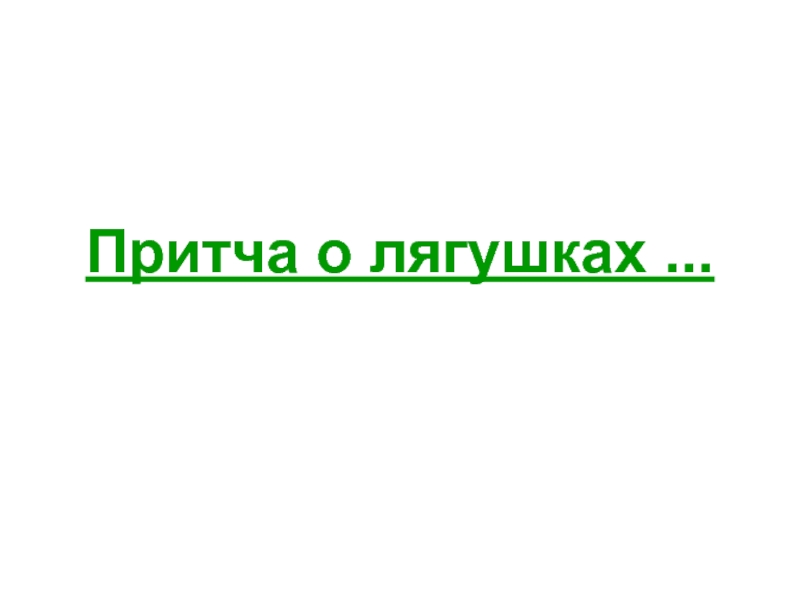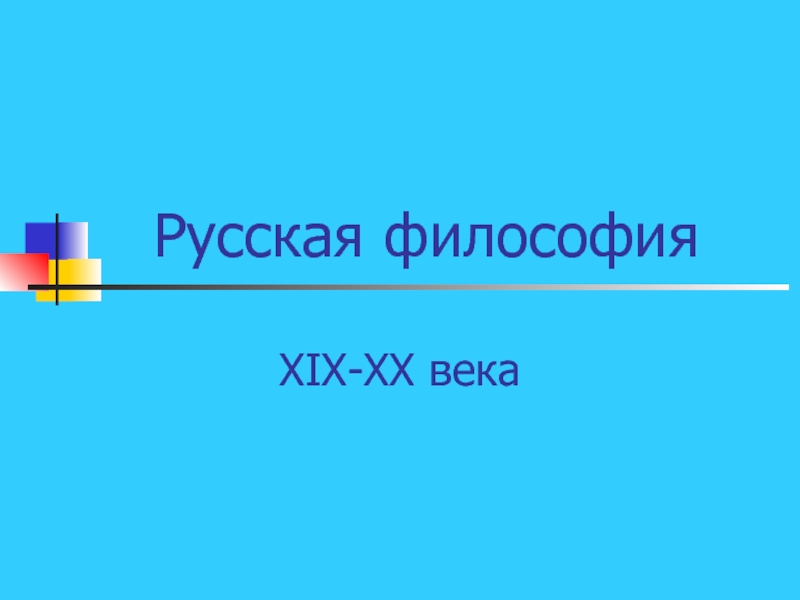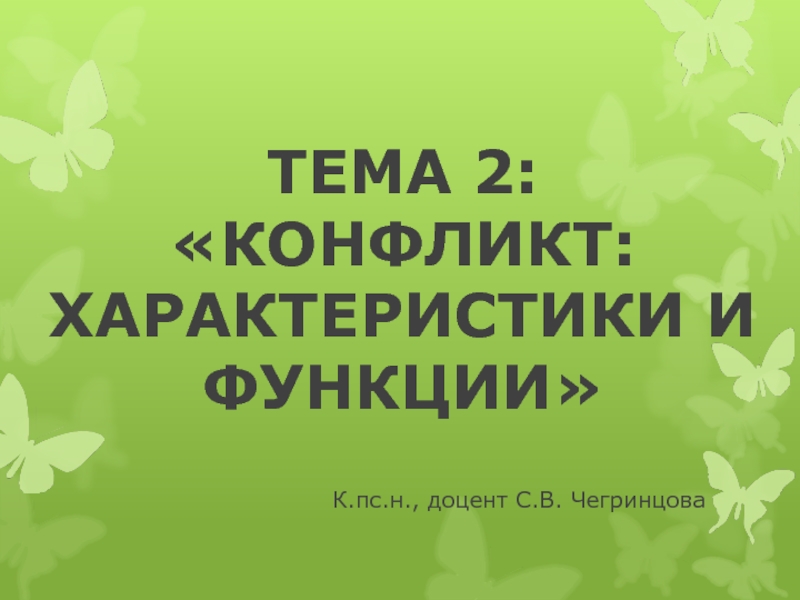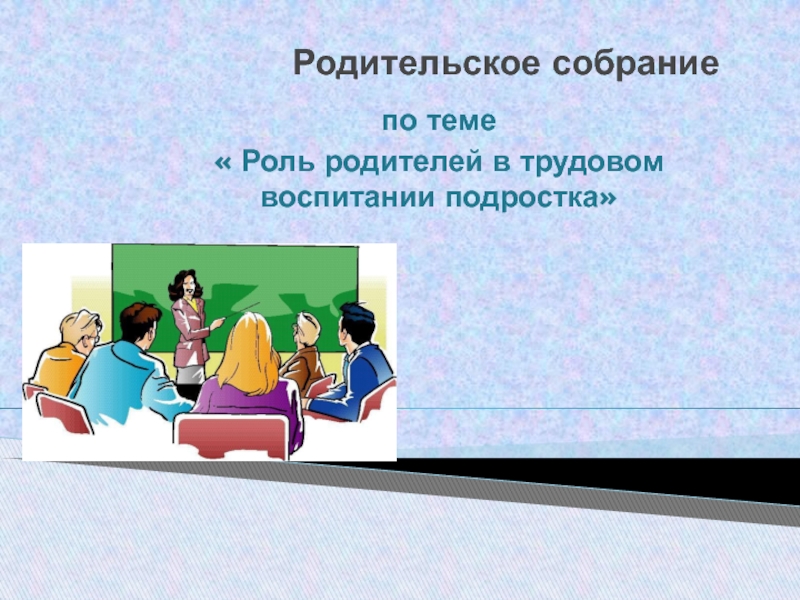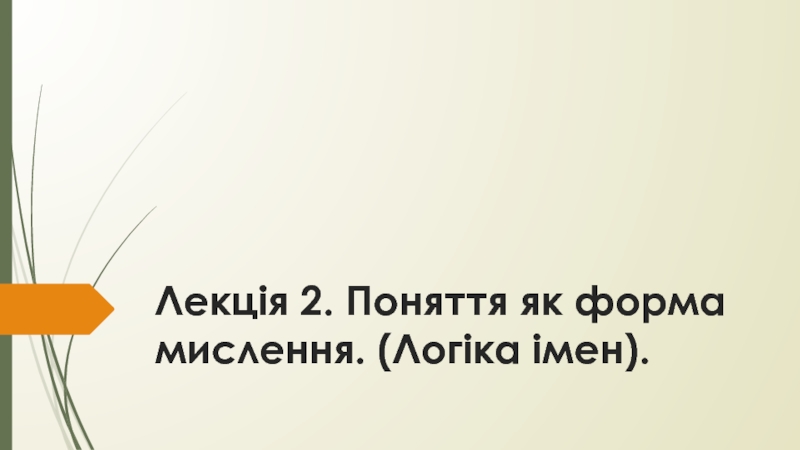- Главная
- Разное
- Дизайн
- Бизнес и предпринимательство
- Аналитика
- Образование
- Развлечения
- Красота и здоровье
- Финансы
- Государство
- Путешествия
- Спорт
- Недвижимость
- Армия
- Графика
- Культурология
- Еда и кулинария
- Лингвистика
- Английский язык
- Астрономия
- Алгебра
- Биология
- География
- Детские презентации
- Информатика
- История
- Литература
- Маркетинг
- Математика
- Медицина
- Менеджмент
- Музыка
- МХК
- Немецкий язык
- ОБЖ
- Обществознание
- Окружающий мир
- Педагогика
- Русский язык
- Технология
- Физика
- Философия
- Химия
- Шаблоны, картинки для презентаций
- Экология
- Экономика
- Юриспруденция
Perception and illusions презентация
Содержание
- 1. Perception and illusions
- 2. WE DON’T SEE THINGS AS THEY ARE, WE SEE THINGS AS WE ARE
- 3. Wundt regards
- 4. Perception Brain
- 5. Form Perception Is based on: Figure Ground
- 6. Law of Proximity or Nearness - the
- 7. Law of Similarity - tendency to group
- 8. Law of Good Form: Good Continuation
- 9. Closure perceptual tendency to fill the
- 10. Perception of Movement perceived by following the
- 11. Depth Perception: “This ability helps to
- 12. Size constancy is the tendency to perceive
- 13. Shape Constancy When we know that the
- 14. Color Constancy: Colors of objects tend to
- 15. Illusion: Something that looks or seems different
- 16. The illusion Of motion. When
- 17. Spiral circle illusion: It seem that
- 18. The Zollner Illusion: The parallel lines
- 19. The Poggindorf’s Illusion: If two parallel line
- 20. The Illusion of size: A near object
Слайд 4 Perception
Brain process :
(selecting, organizing, interpreting)
Factors
- Subjective (Fitness, Interest, Knowledge, Mental Capacity)
- Objective (physical environment -stimuli))
- Social (Social value, Attitudes, Stereotype, Suggestion)
Слайд 6Law of Proximity or Nearness
- the things are situated close to
- form a figure or a pattern
- are perceived as a whole figure
- may be in space and time
- words set nearer to each other form an organization
Human brain sees objects close to each other as groups
Law Of Perceptual Organizations
Слайд 7Law of Similarity
- tendency to group similar elements
- objects similar in
Law Of Perceptual Organizations
Слайд 8Law of Good Form:
Good Continuation
all the parts of a figure in
Symmetry
A symmetrical figure makes a perceptual organization and perceived sooner.
Слайд 9Closure
perceptual tendency to fill the gaps or closure fills the gaps
Common Direction
grouping in the perceptual organization is classified in two groups because of their common direction
Law of Good Form:
Inclusiveness
all the stimuli are include to form a pattern.
Слайд 10Perception of Movement
perceived by following the progressive change of an object’s
Real Movement The perception of the actual movement of objects in the world
Apparent Movement It is movement perceived in the absence of physical movement of an image across the retina.
Слайд 11Depth Perception:
“This ability helps to perceive three dimensional space and
Слайд 12 Size constancy is the tendency to perceive objects in a consistent
Types of Perceptual Constancy:
Слайд 13Shape Constancy When we know that the object is a certain
Types of Perceptual Constancy:
Слайд 14 Color Constancy: Colors of objects tend to remain constant in perception
Types of Perceptual Constancy:
Слайд 15Illusion:
Something that looks or seems different from what it is something
Causes of Illusion:
- Physical causes
- Habit & Familiarity.
- Expectancy & Mental Set.
- Momentary State of Mind or Mood.
- Incomplete analysis of the collective impression.
- Apperception.
- Suggestion.
- Arrangement of stimuli.
Слайд 16 The illusion Of motion.
When a stationary stimulus is perceive
The Illusion Of forms.
Form perception is attained in relation to the figure and ground according to the law of perception Organization. As the figure is smaller then the ground according to perceptual.
The illusion of distance.
The illusion of distance occurs when the parallel lines seem to bend in different directions.
